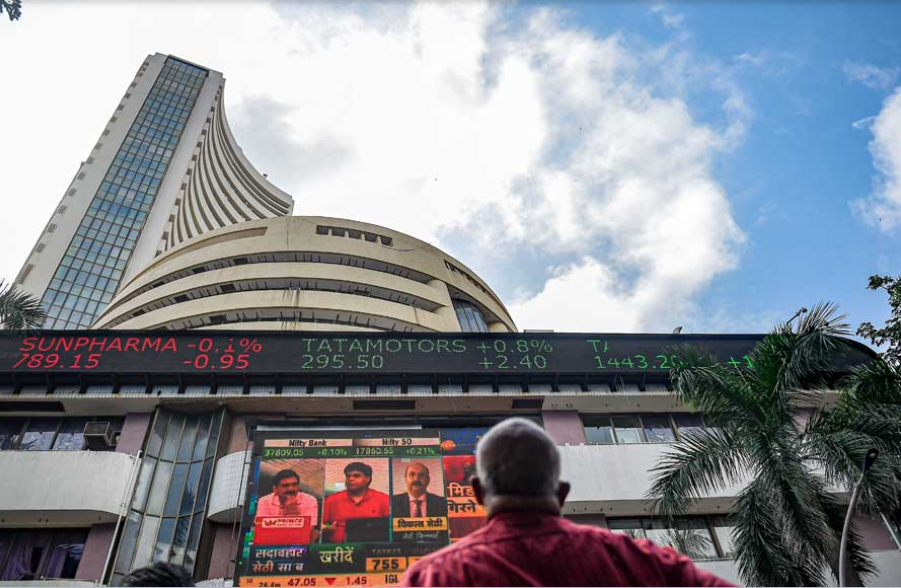Trade Indian equity markets began the trading session on a subdued note as the Sensex and Nifty experienced declines, reflecting cautious investor sentiment ahead of the corporate earnings season. The dip was further exacerbated by continued foreign fund outflows, geopolitical uncertainties, Trade and mixed global cues.
This article delves into the reasons behind the early trade slump, investor sentiment ahead of the earnings season, and the broader implications for the Indian stock market and economy.
Early Trade: Key Highlights
1. Market Performance
- Sensex: The benchmark BSE Sensex dropped over 300 points in the early hours of trading, Trade dipping below the psychological 65,500 mark.
- Nifty: The NSE Nifty also declined by around 90 points, struggling to hold above the crucial 19,500 level.
- Sectoral Performance: Most sectoral indices were in the red, with IT, financials, Trade and FMCG leading the losses, while some pockets like pharma showed resilience.
2. Foreign Institutional Investors (FIIs)
Foreign institutional investors (FIIs), who have been net sellers in the past few sessions, continued to pull out funds, pressuring market performance. According to data, FIIs sold approximately ₹2,000 crore in equities on the previous trading day, marking a persistent trend of outflows.  For the more information click on this link
For the more information click on this link
Key Factors Dragging the Markets
1. Earnings Season Uncertainty
As the corporate earnings season kicks off, investors remained cautious. Several companies are set to report their financial results for the December quarter, and market participants are closely watching key sectors like banking, IT, and consumer goods for indications of growth or slowdown.
IT Sector Woes
- Major IT players, including TCS and Infosys, are slated to release their earnings reports this week. Analysts predict a challenging quarter for the sector due to weak demand in global markets.
- Rising concerns over tech layoffs in the U.S. and Europe add to the pessimism surrounding IT stocks, contributing to their underperformance in early trade.
2. Weak Global Cues
Global equity markets showed mixed signals, with U.S. indices closing in the red in the previous session amid fears of further interest rate hikes by the Federal Reserve.
- Geopolitical Tensions: Ongoing tensions in the Middle East and concerns over slowing growth in China weighed on investor confidence.
- Asian Markets: Key Asian markets, including Japan’s Nikkei and Hong Kong’s Hang Seng, Trade also opened on a subdued note, influencing sentiment on Dalal Street.
3. Foreign Fund Outflows
The persistent selling by FIIs remains a key overhang for the markets. Factors driving this trend include:
- Anticipation of tighter monetary policies in advanced economies.
- A stronger U.S. dollar, which reduces the relative appeal of emerging market equities like India.
4. Domestic Economic Concerns
While India’s overall economic outlook remains robust, specific concerns, such as declining exports and rising inflation, have tempered bullish sentiments:
- RBI’s Hawkish Tone: Recent comments by the Reserve Bank of India suggest that inflation control will remain a priority, raising fears of prolonged high-interest rates.
- Export Woes: Weak global demand continues to affect Indian exports, Trade which reported a contraction in the latest data.
Sectoral Analysis
1. IT and Tech
The IT sector dragged markets lower as investors brace for disappointing earnings. Market sentiment for IT stocks has been weakened by global demand concerns and potential margin pressure.
2. Financials
Banking stocks faced selling pressure, particularly in private sector banks, Trade as market participants await quarterly results to gauge the impact of interest rate movements on lending and asset quality.
3. FMCG and Consumer Goods
Concerns over input cost inflation impacted FMCG stocks, with market leaders showing slight declines. Analysts note that margin pressures could weigh on earnings for the sector in the December quarter.
4. Pharmaceuticals
The pharmaceutical sector was one of the few bright spots in early trade, Trade benefiting from investor interest in defensive stocks amid market volatility.
Investor Sentiment Ahead of Earnings Season
1. Mixed Expectations
- Analysts expect robust performance from select sectors, such as automobiles and healthcare, while others like IT and metals may face headwinds due to global uncertainties.
- Earnings guidance for the next quarter will also be a crucial factor influencing market sentiment.
2. Focus on Key Metrics
Investors will closely scrutinize metrics such as revenue growth, profit margins, Trade and debt levels to gauge how companies are adapting to macroeconomic challenges.
3. Retail Participation Trends
Retail investors have shown resilience, with systematic investment plan (SIP) inflows maintaining an upward trajectory, even as FIIs reduce exposure.
Broader Implications for the Indian Economy
1. Foreign Investment Impact
Continued FII outflows could exert pressure on the Indian rupee and affect India’s ability to attract long-term investments in critical sectors.
2. Inflation and Growth Trade-Off
Market participants are concerned about the trade-off between controlling inflation and sustaining growth, especially as global headwinds persist.
3. Export Competitiveness
Weakness in key export markets like the U.S. and Europe poses challenges for sectors dependent on foreign demand, such as IT and textiles.
Global Outlook: External Influences on Indian Markets
1. Federal Reserve Policy
The Federal Reserve’s approach to interest rates will significantly influence global capital flows, Trade including those to emerging markets like India.
2. China’s Economic Reopening
As China gradually reopens after its stringent zero-COVID policy, global commodity markets and supply chains could experience significant changes, impacting Indian equities.
3. Crude Oil Dynamics
Fluctuations in crude oil prices continue to play a crucial role in shaping India’s economic and market outlook, Trade given the country’s dependency on oil imports.  For the more information click on this link
For the more information click on this link
Experts Weigh In
Bullish Perspectives
Some market analysts remain optimistic, highlighting India’s strong macroeconomic fundamentals and robust domestic demand as factors that will support the equity market in the medium term.
Bearish Concerns
Others caution that heightened global risks and weak corporate earnings could lead to further corrections in the short term.
The Road Ahead: Navigating Market Challenges
1. Monitoring Earnings
The December-quarter earnings season will set the tone for market performance in the near term. Companies’ ability to maintain profitability amid rising costs and slowing demand will be under scrutiny.
2. Focus on Domestic Catalysts
While global cues dominate headlines, domestic factors, Trade such as government policies and budget announcements, will play a critical role in shaping investor sentiment.
Conclusion
The decline in Sensex and Nifty during early trade highlights the market’s cautious approach ahead of the earnings season and amid persistent foreign fund outflows. While short-term headwinds remain, Trade India’s long-term growth story provides a silver lining for investors willing to navigate volatility.
As corporate earnings reports unfold and global uncertainties persist, it is essential for market participants to remain vigilant, focus on fundamentals, and diversify their portfolios to manage risk effectively. ALSO READ:-Trump Vows ‘Economic Force’ Against Canada; Trudeau Fires Back 2025





